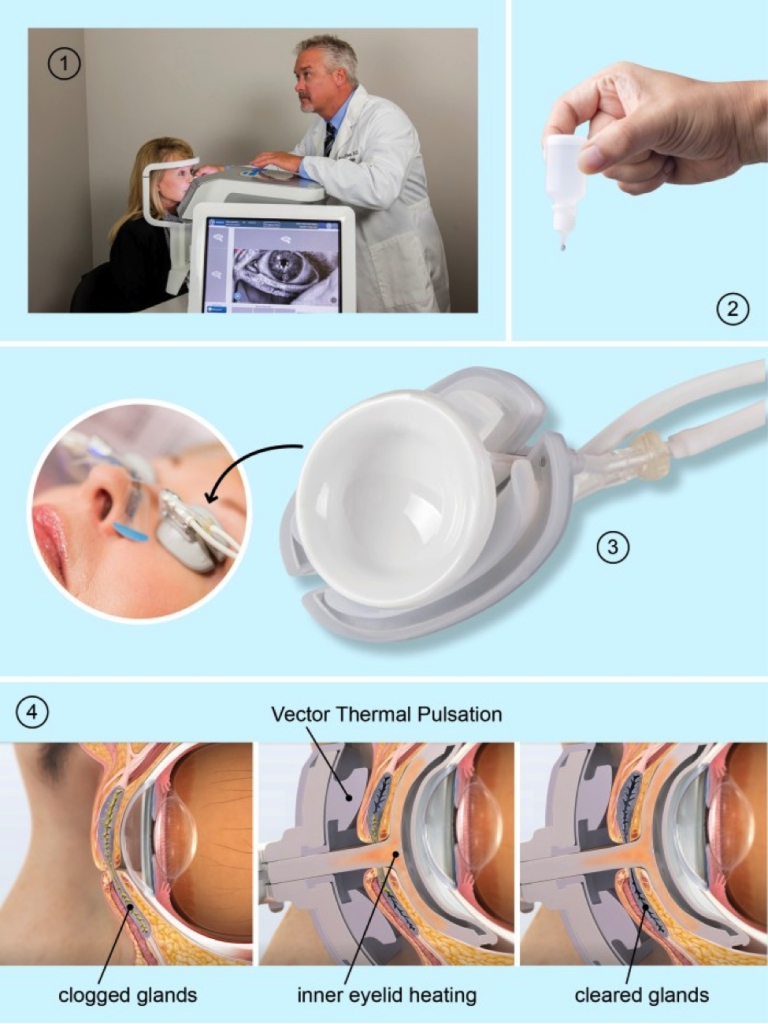Dry Eyes Symptoms and Solutions with Lipiflow Treatments by Allison Rand, MD
Dry eye disease is more common than you might realize, with over 16 million Americans carrying the diagnosis. Many more patients may suffer from these symptoms without a diagnosis, and it has been suggested that one out of every two American adults may experience symptoms of dry eye. About one-third of all the patients I see have complaints that relate to dryness. These symptoms may include blurry vision, glare or light sensitivity, eye pain or foreign body sensation, itching, redness, burning, and tearing. Some patients may have difficulty wearing contact lenses, or notice eye fatigue after reading of watching television. These symptoms can occur in isolation or in any combination.
Most people think that dry eye is just not having enough tears. For some people this is true, but for most people, they might make enough water for the tears, but the tears do not stay on the eye long enough to coat the surface well. These individuals have tears that evaporate too quickly, or perhaps they have excessive tearing – meaning that the tears that are supposed to coat the eye instead run down the cheek. The reason for this is that there is another important part of a healthy tear film – the oil component – which helps the tears stick to the eye. These oils come from the Meibomian glands, tiny glands along the edge of the eyelids that release beads of oil with the force of each blink. If the Meibomian glands are inflamed from blepharitis or Meibomian Gland Dysfunction (MGD) – inflammation of the eyelids, the oil becomes thick and clogs the glands, preventing healthy oil from being released onto the surface of the eye.
Normal oil from the Meibomian glands is free flowing, like olive oil. Inflammation leads to oil that looks like toothpaste, or butter straight out of the refrigerator. When we treat blepharitis, we focus on warm compresses which help to “melt the butter” and improve the flow of oil out of the glands by using heat to liquefy the oil. This is used at least twice daily to maintain healthy Meibomian glands. At the Rand Eye Institute, we have the ability to use state of the art imaging technology called Lipiview, which can directly produce an image of the glands, so that our doctors and patients can see the health of the oil glands and decide on the appropriate treatment plan.
We are very excited to offer our patients who have MGD an additional therapy that is in addition to the traditional dry eye therapies that can be used at home. Lipiflow thermal pulsation technology is available at the Rand Eye Institute. Lipiflow uses a novel device to heat and massage the blocked glands in a 12-minute procedure as part of the exam in the doctor’s office. The system’s activators, which are single use and sterile, are placed on the eye, after numbing drops have been instilled. The procedure is not painful. Most patients say that it’s not only comfortable, but feels good, just like an extended warm compress in a spa-like environment. There is no downtime, and patients start to feel an improvement in symptoms within 4-6 weeks.
This procedure is perfect for patients who are symptomatic with dry eye disease, with Meibomian gland dysfunction that are doing all the correct treatments daily, but looking for something a little stronger to help with their symptoms. The analogy is that you may be brushing your teeth every day, but still want to go to the dentist for a deep cleaning. Lipiflow can be repeated as needed, and many patients choose to have touch up treatments once a year.
We are thrilled with how happy our patients are with the results of their Lipiflow treatments. Receiving proper treatment for dry eye can be life-changing. Please let us know if you are having dry eye symptoms so that we can select the right treatment plan for your individual needs. Give us a call for a dry eye consultation. Dry Eye relief is just a call away to Rand Eye Institute.
Image Enclosed from J&J.

